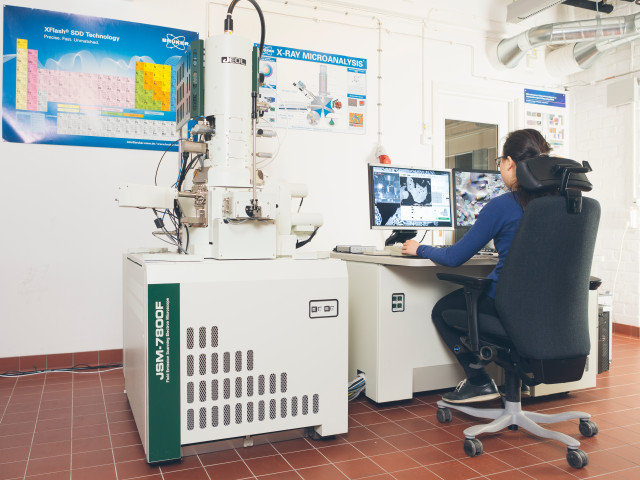Review of basic thermodynamic relations for unary and multicomponents systems. Models for Gibbs energy as function of pressure, temperature and phase constitution. Modelling of carbides, oxides and intermetallic phases. Coupling between atomistic models and computations. How different thermodynamic conditions may be used to represent the same equilibrium state. Different methods to calculate phase diagrams and property diagrams and how such diagrams may be presented. Calculation of the thermodynamic factor of diffusion, driving force for precipitation of new phases and chemical potentials.
MH2200 Applied Thermodynamics and Diffusion Kinetics 6.0 credits

Information per course offering
Course offerings are missing for current or upcoming semesters.
Course syllabus as PDF
Please note: all information from the Course syllabus is available on this page in an accessible format.
Course syllabus MH2200 (Autumn 2007–)Content and learning outcomes
Course contents
Intended learning outcomes
After the course the student shall be able to:
- identify materials engineering problems that can be tackled with thermodynamic equilibrium theory and define the most suitable equilibrium conditions for each type of problem.
- use phase diagrams for multicomponent systems.
- use computer codes to compute various types of diagrams that describe the equilibrium state as a function of some state variable.
- understand the relation between atomistic and thermodynamic computations.
- present suitable models for the thermodynamic properties of various types of phases.
- discuss how to model various types of atomistic defects in materials.
Literature and preparations
Specific prerequisites
Basic course in i thermodynamics, MATLAB
Literature
M. Hillert: Phase Equilibria, Phase diagrams, Phase transformations – their thermodynamic basis, Cambridge University press 1998
Printed material handed out.
Examination and completion
Grading scale
Examination
- INL1 - Assignments, 3.0 credits, grading scale: P, F
- TEN1 - Examination, 3.0 credits, grading scale: A, B, C, D, E, FX, F
Based on recommendation from KTH’s coordinator for disabilities, the examiner will decide how to adapt an examination for students with documented disability.
The examiner may apply another examination format when re-examining individual students.
If the course is discontinued, students may request to be examined during the following two academic years.
Other requirements for final grade
Assignment (INL1; 3 cr).
Written exam (TEN1; 3 cr)
Examiner
Ethical approach
- All members of a group are responsible for the group's work.
- In any assessment, every student shall honestly disclose any help received and sources used.
- In an oral assessment, every student shall be able to present and answer questions about the entire assignment and solution.